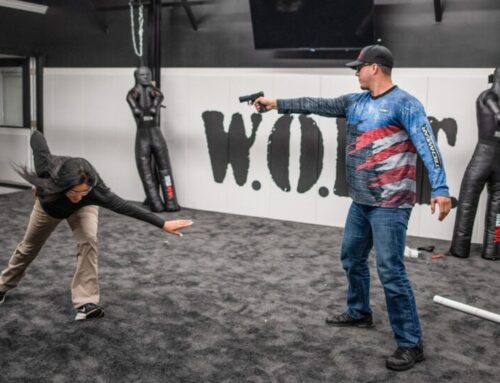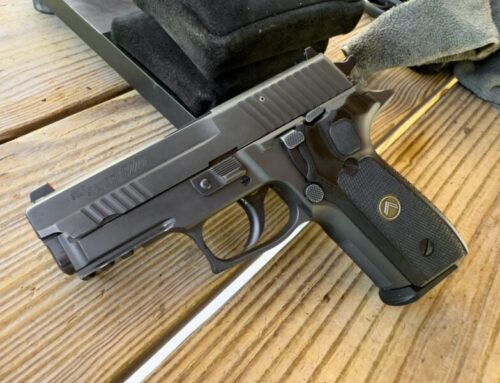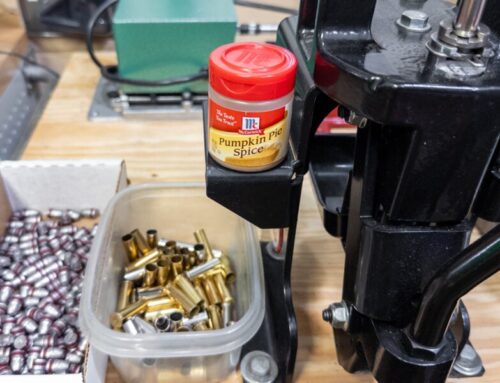
The Hornady Concentricity Gauge tests alignment of the projectile with the case.
As an avid reloader, I try really, really hard to make sure that I seat my rifle bullets straight in the case so that they are perfectly centered and aligned with the case itself. As an avid shooter, I assume that ammo companies do the same for the rifle cartridges I buy. Why? If a bullet starts its journey from a crooked beginning, it’s probably not going to exhibit stellar accuracy and shot to shot consistency. I like to visualize a late-night Disco bowling gutter ball. You know, where that 16-pounder bounces from side to side all the way down the lane. Sure, you might get lucky and get a strike after the ball rattles down the lane, but your odds ain’t so hot of bowling a perfect 300.
Sure, even when using one rifle, there are some ammunition-related factors that contribute to accuracy and consistency, including, but certainly not limited to:
Powder charge weight consistency
Primer consistency
Cartridge case length
Overall length
Distance between the bullet’s bearing surface and the rifling
Bullet construction and uniformity
Bullet jacket consistency
Cartridge case mouth thickness and uniformity
And so on…
I’m also thinking that the current distance between Jupiter’s four Galilean Moons and Toad Suck, Arkansas, has something to do with overall accuracy, but that’s admittedly more of a theory than a hard fact. The bottom line is that no single factor determines the accuracy or lack thereof.
However, one big contributor to poor group consistency is bullet concentricity relative to the case. You’ll hear this called bullet runout. Think of it this way, if you stuff a bullet into a cartridge case exactly straight, then a line from the center of the tip through the exact center of the base would continue on through the mathematical center of the case and out the center of the primer. Assuming the chamber of your rifle is cut decently well, and the barrel is in line with the chamber, then perfect bullet alignment with the case will result in the bullet being forced into the rifling oriented directly with its flight path. If you cram a bullet into the cartridge case crooked, then it will be angled off to one side of the chamber and barrel so it will engage the rifling off center. The barrel will get it more or less straightened out as the bullet travels through the rifling, but this tipsy beginning is bound to result in inconsistent points of impact.
Sometimes I just feel the need to get a little geeky and engage in some simple science. Fortunately, our friends at Midsouth Shooters Supply feel compelled to help support important knowledge work like this; because science! They kindly loaned some ammo and gear to do a little investigative research.








Hello, and good morning.
I’ve just finished your article on “Bullet Concentricity” and I found it to be a good read but it also sparked a few questions.
Being an avid shooter and reloader of personal ammunition I too have wondered about Bullet concentricty.
Having worked in the private sector manufacturing ammunition for both sport and military use for the last 12yrs I am very conscientious of concentrcity but we take it to a whole new level by manipulating and refining concentricty of the bullets “Jacket,” prior to insertion of the “slug” by adjusting a series of punches and dies within our machines.
It’s amazing at how much of an ill fated effect or the number of “flyers” that are produced that don’t group properly just due to the concentricty of the bullets jacket.
With that being said it’s deeper than just a proper seating alignment that aids in the truer accuracies longed for by most shooters. We ultimately have to take into account that after the projectile is refined at the factory level that headspace also plays a part in concentric alignment.
One question I have where your controlled study is concerned is was “ramping” of the cartridge when placed within the chamber via bolt carrier/slide from OUT of the magazine taken into consideration? When cartridges are stacked into the magazine being double or single stacked, fully loaded or partially, does something like that have an effect on the pressure in which they are under when being ramped into the chamber?
Having a poor crimp on the projectile would lead one to believe that simply just chambering the round could throw off any central or, “mathematical alignment” as you put it. Wouldn’t you think that is plausible theory as well?
I’d think this would be especially true where in the AR-15 you have a “Rifle” ramp as well as “M4” ramp variant. Given that the AR/M-16 rifles have double stack mags it would have less resistance when being chambered causing less canting/tilting of the projectile when fed from the mag to the chamber therefore maintaining Bullet seat comcentricty thus improving accuracy according to your theory.
What are your thoughts on this?
James G.
If I’m understanding properly, an interesting experiment would be to test identical ammunition with one group being carefully single fed into the chamber to prevent ramp and feeding effects and the other “auto fed” from a magazine, thereby hitting the ramps to see if there is any difference?
I would bet at longer range and careful testing there might be. Just a guess though…